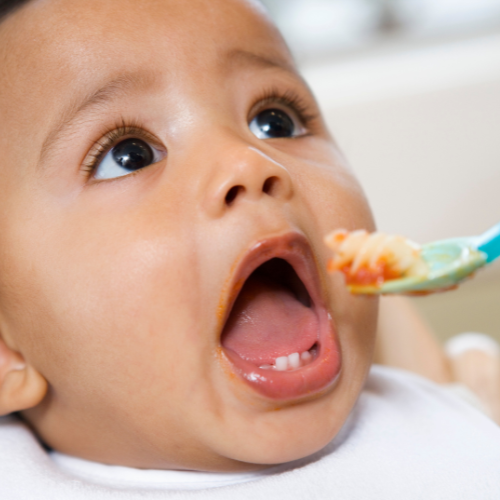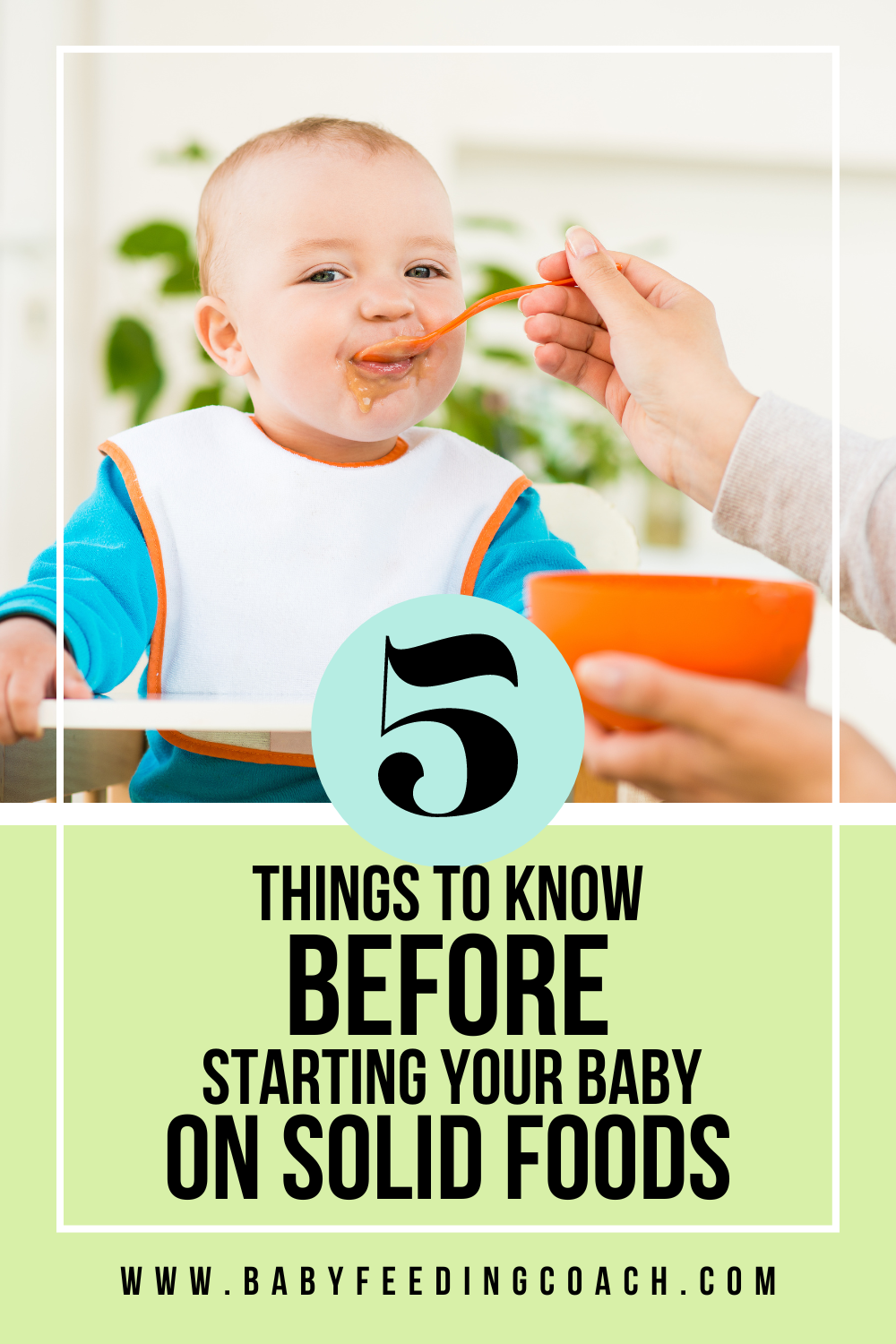Starting Your Baby on Solid Foods: Things You Must Know
Jan 08, 2023
If you are anything like me, the thought of starting solids with my baby was exciting, but also overwhelming.
There is so much information and so many opinions on the "best" approach that it can be hard to decide what is best for you and your family.
Let me break it down into 5 important things to consider before your baby starts eating solid foods.
1. Is your baby ready to start solid foods?
The AAP recommends starting solid foods "around 6 months of age", but you may find that many pediatric providers give the go-ahead earlier.
Ultimately, it is up to you when you start after your pediatric provider says it is okay.
Milestones your baby should meet before introducing foods include:
-
Holding head up when sitting with minimal propping
-
No longer has tongue thrust, which looks like your baby sticking their tongue out for a second or two
-
Can transfer food from spoon/hands to mouth
-
Has an interest in eating/food
When in doubt, wait until your baby has met ALL the milestones before introducing solid foods.
In the next section, we will go over purees vs. baby-led weaning. Babies are often ready to start pureed food before they are ready to feed themselves finger foods.
I like to say that babies starting finger foods should have mastered all developmental milestones before their first bite.
2. What method is best for your family: purees vs. BLW?
There are two common methods of introducing food to a baby:
-
pureed food
-
baby-led feeding
Let's break it down a bit more:
Purees
Food is offered in a liquid or semi-liquid form and is fed to a baby via a spoon. A single food is often cooked or mashed until soft and is thinned with a liquid such as water, breastmilk, or formula.
Different foods and spices may be combined as a baby gets older and texture is gradually introduced. The end goal is that baby is eating finger foods before or around their first birthday.
Baby-led weaning
Also known as baby-led feeding or finger foods.
Soft, age-appropriate food is offered on a plate or tray. The baby is able to choose what they would like to eat or not. No caregiver puts food in the baby's mouth.
As I stated before, for safety reasons, your baby should be a master of the necessary developmental milestones before starting.
Both baby-led weaning and purees are great options. Neither one is better than the other.
It is mostly about your comfort levels and beliefs to help you find out what works best for your family.
Remember...It is okay to follow any path you choose and to change course if you find that something isn’t working well. You aren't failing if you give purees while doing baby-led weaning.
3. Are you prepared to start solid foods?
Assess your feelings:
First, let's address the huge emotional component when starting food.
Sometimes there is a fear of choking or allergens.
Sometimes there is excitement about not having to rely solely on formula or breastmilk.
Sometimes there is sorrow because your little baby isn't quite so little anymore.
Assess your feelings and know they are all valid.
Assess your skills and comfort levels:
Giving a baby solid foods can come with some risks.
Remember, they are used to just drinking milk for every meal so there is definitely a learning curve!
It is a good idea to have all childcare providers (parents, babysitters, grandparents, etc) learn infant CPR.
Knowing what to do when a baby starts to choke is imperative and there are typically local courses available.
Assess your lifestyle:
Take time to assess your needs and your current lifestyle before starting. Answer these questions:
-
Is your baby going to daycare? What are their policies on infant feeding?
-
Will all caregivers respect your feeding wishes, cut the food appropriately, and be willing to cook or heat meals?
-
Which type of feeding are you most comfortable with?
-
Do you cook most meals? Will you do mostly prepared foods?
>>> Wondering how to balance your baby's schedule while adding solid foods? Get the free guide here! <<<
4. Is your house prepared?
One of my top tips is to have emergency numbers posted on your fridge. Include the numbers for poison control, pediatrician, parent(s) cell phones, emergency contacts, etc.
It is a good idea to include instructions on when to call 911 should the need arise.
Leaving written instructions for caregivers about feeding schedules and foods to avoid can help make sure your child is fed in a way that is best for you.
Details on how much to serve, when to serve and what to serve can prevent a lot of confusion.
And don’t forget to have baby feeding products you may need!
Things like a high chair, baby spoons, bowls, cups, bibs, etc. will all help set you up for success.
Do some research, look at what you and your family need, and try not to worry about what everyone else has.
5. Do you know what food is best to offer first?
One of the most frequently asked questions I get is “what food do I start with?”
My answer: “Any of them!”
It really can be any food you want.
It can be wise to start with a non-allergen food and something with iron in it, but again, do what works best for you.
Starting your baby on solids can be a lot to handle - there is a TON of information out there.
>>>I surveyed over 100 parents from the Baby Feeding Coach community, compiled all of the most common questions, and created a comprehensive digital course called Starting Solids 101 so you can find a method to introduce foods that is right for your family. <<<
>>> Tired of worrying about feeding your baby? Get personalized support so you can enjoy feeding your baby. <<<
Free Resource for Parents and Medical Providers:
The Baby Formula Database
Helping you understand what formulas are available and narrow down what is best for your family.
This will sign you up for the Baby Feeding Coach email list. I will not spam you. Opt out anytime.







